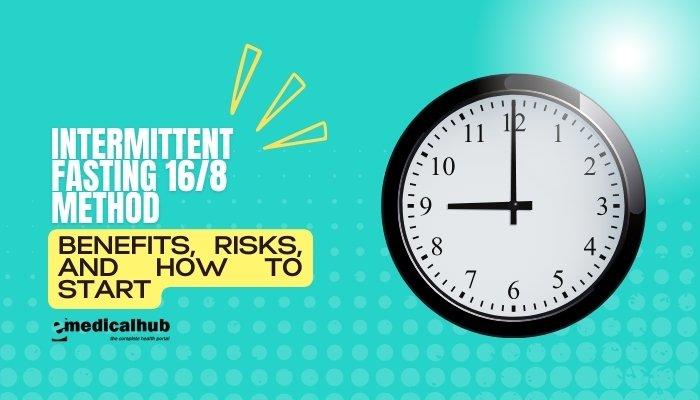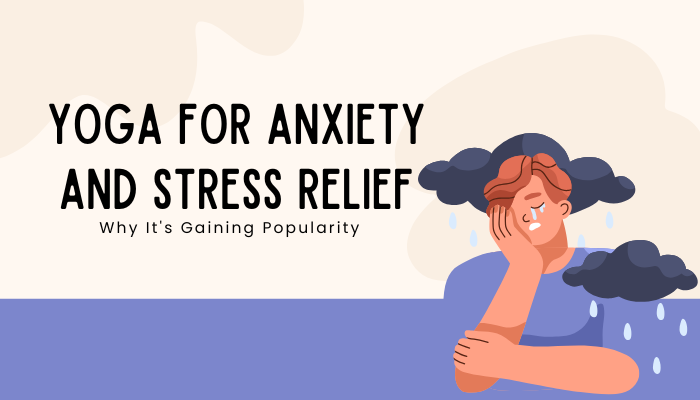Introduction
Intermittent fasting has gained significant popularity in recent years as a dietary strategy for weight management, metabolic health, and general well-being. One of the most accessible methods is known as the 16/8 approach, which involves restricting eating to an 8-hour window each day and fasting for the remaining 16 hours.
Fans of the 16/8 schedule praise its simplicity: rather than counting calories or eliminating entire food groups, the focus is on timing your meals. Yet, as with any dietary intervention, it’s important to understand how it works, the benefits it may offer, and the potential drawbacks or side effects.
In this article, we’ll explore the fundamentals of the 16/8 intermittent fasting method. We’ll cover what it entails, the science behind fasting’s effects on metabolism, and how best to implement and maintain it. We’ll also discuss common pitfalls—such as nutrient deficiencies, overeating, or ignoring medical conditions—and clarify who may benefit or should exercise caution.
Whether you’re curious about weight loss, improving metabolic markers, or simply seeking a new approach to mindful eating, the 16/8 method can be a versatile and straightforward framework.
Disclaimer: The information herein is for general education and not a substitute for medical advice. If you have a health condition, are pregnant, or have concerns about fasting, consult a qualified healthcare provider before trying any new eating plan.
Understanding Intermittent Fasting and the 16/8 Method
What Is Intermittent Fasting?
Intermittent fasting (IF) is not a diet in the traditional sense—there’s no specific list of “allowed” or “forbidden” foods. Instead, IF focuses on when you eat rather than what you eat. The primary idea is to cycle between periods of eating and periods of fasting, allowing your body extended breaks from digestion and calorie intake.
Key forms of intermittent fasting include:
- 16/8 Method: 16 hours of fasting, 8 hours of eating per day.
- 5:2 Diet: Eating normally for five days per week and severely restricting calories (roughly 500–600 daily) for two non-consecutive days.
- Alternate-Day Fasting: Eating normally one day, then very low-calorie (or no-calorie) the next.
The 16/8 Approach
The 16/8 protocol is one of the most beginner-friendly IF strategies. Practitioners typically choose an 8-hour window during which they consume all their meals and snacks, then fast for the remaining 16 hours. Common setups include:
- Skipping Breakfast: First meal at noon, final meal around 8 PM.
- Skipping Dinner: First meal at 7 AM, last meal at 3 PM.
- Flexible Windows: Tailored to personal or work schedules as long as you maintain a 16-hour fast.
During the fasting window, you can drink water, black coffee, herbal tea, or other zero-calorie beverages to stay hydrated and help with appetite control.
How the 16/8 Method Works
Energy Utilization and Metabolic Changes
When you eat, your body uses some of the incoming calories immediately for energy. The rest is stored as glycogen in the liver and muscles, or as fat in adipose tissues. During fasting:
- Glycogen Depletion: After about 10–12 hours of fasting, glycogen stores begin to run low, prompting your body to look for alternative fuel sources—like fat.
- Fat Burning: This shift may increase fat oxidation, potentially aiding in weight management.
- Insulin Levels: Lower insulin levels during fasting can improve insulin sensitivity over time, beneficial for metabolic health.
Appetite Hormones and Calorie Control
Some people find that a shorter eating window naturally helps them reduce total calorie intake, as they have less time to snack. Additionally, certain fasting states might help rebalance hunger hormones like ghrelin (which promotes hunger) and leptin (which signals fullness). This can lead to improved portion control or decreased cravings, if the method suits the individual’s physiology.
Relationship to Circadian Rhythms
Circadian rhythms—our 24-hour internal clock—affect digestion, hormone release, and metabolic processes. Aligning your eating window with your body’s natural day-night cycle (e.g., not eating late at night) may further support a healthy metabolism, stable energy, and better sleep. The 16/8 framework can be adapted to reflect an early or late mealtime window that best matches each person’s lifestyle.
Potential Benefits of 16/8 Intermittent Fasting
Weight Management
A primary reason individuals try 16/8 IF is for weight loss or weight maintenance. By confining eating to an 8-hour window, it can be simpler to reduce calorie consumption. Some small studies suggest moderate weight reduction is possible, particularly if the overall diet is nutrient-dense and not overshadowed by binge eating in the eating window.
Better Metabolic Health
Some research indicates IF may:
- Enhance Insulin Sensitivity: Potentially helpful for prediabetes or type 2 diabetes control.
- Improve Lipid Profiles: Lower triglycerides, modest improvements in cholesterol for certain individuals.
- Decrease Inflammation: Some biomarkers of inflammation respond positively to fasting states.
Simplicity
Unlike complex diets with strict menus or extensive meal prep, the 16/8 model is straightforward:
- Decide your 8-hour feeding window.
- Outside that window, consume only water or other zero-calorie drinks.
- Eat balanced meals within the window, avoiding overcompensation.
The method can seamlessly integrate into various lifestyles if planned carefully.
Positive Eating Habits
By focusing on a designated eating time, you might make more intentional food choices. If you skip breakfast, for example, you may concentrate on nutrient-dense lunches and dinners to ensure you meet nutritional needs in a shorter timeframe.
Potential Risks and Side Effects
Nutrient Deficiencies or Overeating
Some individuals mistakenly interpret 16/8 as “anything goes” during the eating window, leading to nutrient-poor meals or binge sessions. This can sabotage weight or health goals. Conversely, restricted hours may lead to skipping vital nutrients if meals aren’t well-rounded.
Disordered Eating Tendencies
Anyone with a history of eating disorders or restrictive eating patterns might be triggered by fasting approaches. The boundary between mindful restriction and unhealthy obsession can be thin.
Impact on Certain Populations
- Pregnant or Breastfeeding Women: Typically not advised to follow strict fasting routines due to nutrient demands.
- Individuals with Hypoglycemia: Long fasts might cause dangerously low blood sugar.
- Intensive Athletes: Energy requirements might be high, requiring more frequent fueling.
Initial Adjustments
Early on, one may experience headaches, irritability, or hunger pangs during fasting hours, especially if used to constant grazing. Adapting is often possible in 1–2 weeks.
Best Practices to Start the 16/8 Method
Choose an Eating Window Aligned to Lifestyle
Select an 8-hour period that suits your daily schedule:
- Skipping Breakfast: 12 PM–8 PM is common for those who enjoy dinner or social dinners.
- Skipping Dinner: 7 AM–3 PM suits early risers or those who prefer big breakfasts/lunches.
- Flexible: Some shift the window by an hour or two on weekends if social events differ.
Stay Hydrated and Balanced
- Water Intake: Keep a water bottle on hand to prevent dehydration, especially during the fasting period.
- Nutrient-Dense Meals: During the 8-hour window, aim for vegetables, fruits, lean proteins, whole grains, and healthy fats.
- Avoid Overly Restrictive: While controlling mealtime, you still want to meet essential vitamins, minerals, and macronutrient needs.
Gradual Transition
If the immediate jump to 16 fasting hours is daunting:
- Start with 14/10: Fast for 14 hours, eat for 10.
- Increment: Extend the fasting window by 1 hour each week until you reach 16/8.
Mindful Eating
Quality matters. Don’t let the sense of “time-limited eating” tempt you to binge on junk. Listening to hunger/satiety cues remains vital—avoid forcing large amounts just because the window is closing.
Common Pitfalls and How to Address Them
Late-Night Binging
If you have an evening eating window but find yourself overeating before bed:
- Plan Balanced Meals: Ensure you have enough protein, fiber, and healthy fats at dinner to reduce cravings post-meal.
- Limit Sugary Snacks: Sugar can spike cravings and disrupt sleep.
- Consider Shifting Window: Possibly end earlier if late-night cravings are a consistent issue.
Energy Dips in the Morning
Those skipping breakfast might feel lethargic initially:
- Stay Hydrated: Sometimes thirst is mistaken for hunger.
- Black Coffee or Tea: Zero-calorie caffeinated drinks can support alertness if tolerated well.
- Evaluate Sleep Quality: Tiredness might also relate to insufficient or poor-quality rest.
Social Conflicts
Weekend brunches or dinners with friends may clash with rigid fasting:
- Flexible Hours: You can shift your 8-hour window on certain days, or allow occasional relaxed rules for special occasions.
- Plan Around Events: If you have an early lunch date, start your window earlier. If a late dinner is planned, shift your window or break it occasionally.
Weight Plateaus or Gains
- Caloric Surplus: Overeating or poor food choices in the 8-hour window can exceed daily needs. Track portion sizes or macros if you plateau.
- Check Macros: If lacking protein or overshooting carbs/fats, weight goals may stall.
- Add Physical Activity: Combining 16/8 with consistent exercise can accelerate body composition improvements.
Combining 16/8 with Other Approaches
Exercise and Strength Training
- Fast or Fed Workouts: Some do fasted morning exercise. But if you feel weak, schedule the workout within or near your eating window for fueling.
- Post-Workout Nutrition: If you do intense workouts, ensure your feeding window aligns so you can adequately recover with protein and carbs.
Mindful or Intuitive Eating
Consider mindful eating principles—like savoring each bite, recognizing genuine hunger vs. emotional urges—to complement the 16/8 structure. This helps you avoid bingeing once the fast ends.
Nutritional Supplementation
When restricting mealtimes, it’s crucial not to shortchange essential nutrients:
- Multivitamin: Possibly beneficial if your dietary variety is limited.
- Electrolytes: During fasting, especially if doing extended or combining with rigorous exercise, you may need to replenish minerals (sodium, magnesium, potassium).
Who Should Exercise Caution or Avoid 16/8?
Pregnant or Breastfeeding Women
Nutrient demands rise during pregnancy/lactation; timing restrictions may not align well with consistent nutrition. Professional medical advice is recommended.
Individuals with History of Disordered Eating
People prone to binge eating or restrictive patterns might find 16/8 triggers old habits. Seeking counsel from a dietitian or therapist is advised before starting IF.
Adolescents and Some Older Adults
Children/teens typically need stable meal patterns for growth. Older adults might need consistent protein intake or have medical conditions complicating fasting. Always consult a healthcare provider.
Specific Medical Conditions
People with diabetes, hypotension, or other conditions requiring stable blood sugar or medication timing must consult a doctor to adjust or see if 16/8 is safe.
Frequently Asked Questions (FAQ)
Is skipping breakfast unhealthy?
Not necessarily. While some studies tout breakfast benefits, the 16/8 approach can skip breakfast if your total daily nutrient intake remains adequate. It depends on personal preference and metabolic response.
Can I drink coffee or tea during the fast?
Yes, but ideally unsweetened. Small amounts of cream or a dash of milk may be acceptable for some, though it technically breaks a pure fast. Water, black coffee, and herbal teas are standard.
What if I become ravenous and overeat in the 8-hour window?
This can happen initially. Ensuring balanced meals (with protein, fiber, healthy fats) and mindful eating can prevent overeating. If overeating persists, evaluate if 16 hours is too long or if other stressors are fueling emotional eating.
How long does it take to see results in weight or well-being?
Varies. Some notice better energy or moderate weight changes after 2-4 weeks. Others may need a couple of months. Also, results depend on overall calorie balance and dietary quality.
Is it safe to do 16/8 long term?
Many people adopt this pattern long term if it’s sustainable and they maintain nutritional adequacy. Always monitor your body’s signals and consult professionals if concerns arise.
Conclusion
The 16/8 method of intermittent fasting provides a straightforward, potentially beneficial framework for those seeking better weight management and metabolic health. By limiting your daily eating to an 8-hour window, you can encourage a mild caloric deficit, possibly enhance insulin sensitivity, and reinforce a structured approach to nutrition. Emerging research also suggests that time-restricted feeding can help with energy regulation and mental focus, although effects differ among individuals.
Success with 16/8 relies on common-sense guidelines: focus on whole, nutrient-rich foods, stay hydrated, and ensure your limited window truly supports daily energy and essential nutrient needs. The method can seamlessly integrate with active lifestyles, mindful eating strategies, and established exercise routines.
Nonetheless, it’s not suitable for everyone—children, certain medical patients, pregnant women, or those with past eating disorders must approach with caution. If you suspect health complications, speak with a doctor or dietitian. Ultimately, when done correctly, 16/8 fasting can become a flexible and effective tool to manage weight, support metabolic well-being, and bring structure to daily meals.
References
- Patterson RE, Laughlin GA, LaCroix AZ, et al. Intermittent fasting and human metabolic health. J Acad Nutr Diet. 2015;115(8):1203-1212.
- Sutton EF, Beyl R, Early KS, et al. Early Time-Restricted Feeding Improves Insulin Sensitivity, Blood Pressure, and Oxidative Stress Even Without Weight Loss in Men with Prediabetes. Cell Metab. 2018;27(6):1212-1221.e3.
- Wilkinson MJ, Manoogian ENC, Zadourian A, et al. Ten-Hour Time-Restricted Eating Reduces Weight, Blood Pressure, and Atherogenic Lipids in Patients with Metabolic Syndrome. Cell Metab. 2020;31(1):92-104.e5.
- Mattson MP, Allison DB, Fontana L, et al. Meal frequency and timing in health and disease. Proc Natl Acad Sci USA. 2014;111(47):16647–53.
- Varady KA, Hellerstein MK. Alternate-day fasting and chronic disease prevention: a review of human and animal trials. Am J Clin Nutr. 2007;86(1):7-13.
- Chaix A, Manoogian ENC, Melkani GC, et al. Time-restricted eating to prevent and manage chronic metabolic diseases. Annu Rev Nutr. 2019;39:291-315.
- Tinsley GM, La Bounty PM. Effects of intermittent fasting on body composition and clinical health markers. Nutr Rev. 2015;73(10):661-74.
- Sherman DS, et al. The role of diet and nutritional supplementation in controlling the outcome of mild and moderate depression. Neurochem Int. 2021;145:104997.
- Kahleova H, et al. Eating two larger meals a day as opposed to six smaller meals a day. Diabetologia. 2014;57(8):1552-60.
- American Diabetes Association. Position of intermittent fasting for diabetes management. 2022.
- de Cabo R, Mattson MP. Effects of intermittent fasting on health, aging, and disease. N Engl J Med. 2019;381(26):2541-2551.
- Current controversies in nutrition. J Acad Nutr Diet. 2021;121(3):493-502.






